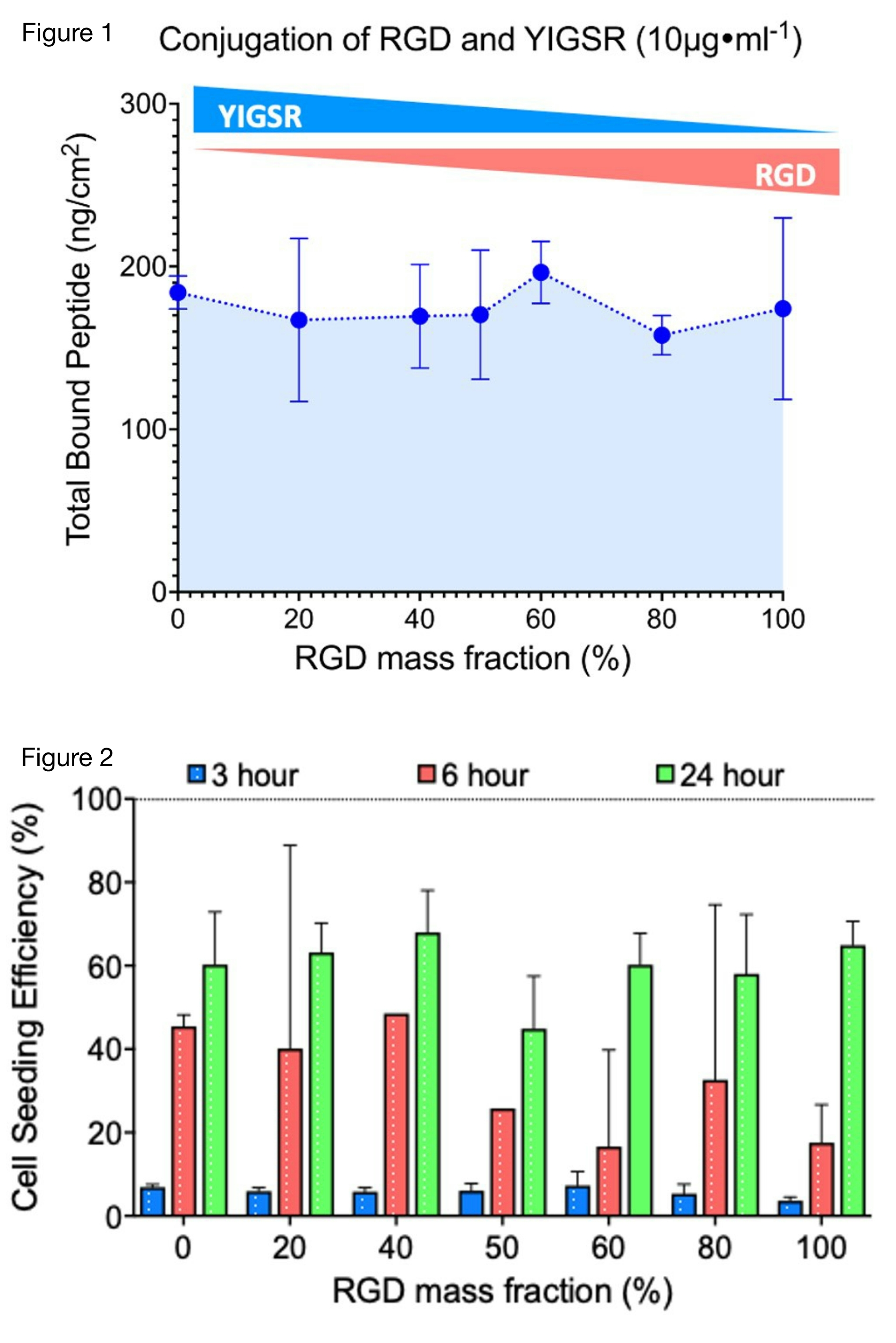Skeletal muscle (SM) has an innate capacity to regenerate its own tissues but struggles to recover from critically sized defects such as Congenital Diaphragmatic Hernias (CDH) in pediatric cases and Volumetric Muscle Loss (VML) and Patch Repair in adults. Tissue Engineering (TE) is a potential therapeutic to address these clinical challenges by integrating scaffolding, tissue architecture, and bioactive factors to stimulate regeneration.
This study focused on optimizing tissue architecture for regeneration, using cell-adhesive molecules (CAMs), specifically fibronectin derived RGD to laminin derived YIGSR, on Polyglycerol Dodecanedioate (PGD) substrates. CAMs, which play a vital role in cell and organelle attachment in the Extracellular Matrix (ECM), were used to functionalize the surface of the PGD substrate surface, a biodegradable polymer suitable for minimally invasive implantation due to its thermal manipulability.
We hypothesized that CAMs increase overall murine myoblast attachment, with higher attachment shown in the laminin binding domain YIGSR dominant mass fractions. To test this, PGD was cast into a 96-well plate, sterilized with ethanol, and functionalized with seven mass fractions of RGD:YIGSR (100%-50%). A CBCQA Assay and One-way ANOVA analysis revealed, uniform peptide binding observed across all mass fractions (Figure 1), establishing a consistent baseline for cell attachment.
Murine myoblasts (C2C12s) were seeded onto the peptide-enhanced substrate in triplicates and quantified via fluorescence intensity and a Calcein assay. Results, analyzed with Two-Way ANOVA, show differences in cell attachment between mass fractions at varying time points. At the 24-hour mark, seeding efficiency reached 60% across all mass fractions (Figure 2), with YIGSR dominant mass fractions (100%-50%) having significantly greater attachment at the 6-hour mark. We perceive that Murine Myoblasts attach better to YIGSR due to prior work that indicates their ability to interact with the extracellular matrix laminin binding integrin receptor α7-β1.
Despite biological variability, these findings suggest the addition of CAMs, specifically YIGSR alongside RGD, enhances cell attachment and reduces attachment time. Future studies will investigate the use of micropatterned peptide-enhanced substrates to further optimize cell attachment and alignment.


